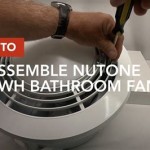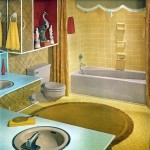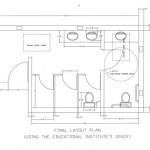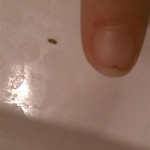Understanding Water Hoses for Bathroom Sinks: A Comprehensive Guide
Water hoses, also known as supply lines or faucet connectors, are crucial components in any bathroom sink setup. They are responsible for delivering both hot and cold water from the main plumbing system to the faucet, allowing for controlled water flow and temperature regulation. Selecting the appropriate water hose is essential for proper functionality, leak prevention, and long-term durability. This article provides a comprehensive overview of water hoses for bathroom sinks, covering various aspects such as types, materials, installation, troubleshooting, and maintenance.
Types of Water Hoses for Bathroom Sinks
Water hoses are available in several types, each with its own advantages and disadvantages. The selection process should consider factors such as flexibility, durability, ease of installation, and compatibility with the existing plumbing system. The most common types include:
Braided Stainless Steel Hoses: These hoses consist of a flexible inner tube, typically made of PVC or rubber, encased in a braided stainless steel exterior. The stainless steel braid provides exceptional strength and resistance to bursting under pressure. They are considered highly durable and are a popular choice for both new installations and replacements. Braided stainless steel hoses are also resistant to kinks and corrosion, making them a long-lasting option.
Flexible PEX Hoses: PEX (cross-linked polyethylene) is a type of plastic tubing known for its flexibility, durability, and resistance to temperature extremes. Flexible PEX hoses offer easy installation, as they can be readily bent and maneuvered into tight spaces. They are also resistant to corrosion and mineral buildup, which can be a problem in areas with hard water. PEX hoses are a reliable and cost-effective option for bathroom sink connections.
Copper Supply Tubes: Historically, copper tubes were a standard choice for water supply lines. While they offer excellent durability and resistance to corrosion, they are more difficult to install than flexible hoses, requiring specialized tools and soldering skills. Copper tubes are rigid and less forgiving of misalignment, which can make them challenging to work with in confined spaces. Due to the increased complexity of installation and the availability of more convenient alternatives, copper supply tubes are less commonly used in modern bathroom sink installations.
Chrome-Plated Brass Hoses: These hoses feature a brass inner tube coated with chrome for a sleek, aesthetic finish. They offer a balance of durability and flexibility. The chrome plating provides some resistance to corrosion, but it is important to choose high-quality chrome-plated brass hoses to ensure long-term performance. Cheaper versions may be prone to peeling or flaking of the chrome coating.
The choice between these options depends on budget, experience with plumbing, and aesthetic preferences. Braided stainless steel and flexible PEX offer the best combination of durability and ease of installation for most users.
Factors to Consider When Choosing a Water Hose
Selecting the right water hose for a bathroom sink involves several key considerations to ensure compatibility and functionality. One should measure the distance between the water shut-off valve and the faucet tailpiece to determine the appropriate hose length. A hose that is too short will be difficult or impossible to connect, while a hose that is too long can kink or interfere with other plumbing components.
The diameter of the hose connections should match the size of the shut-off valve and the faucet tailpiece. Standard sizes include 3/8 inch and 1/2 inch. It is essential to verify the dimensions before purchasing a hose to avoid compatibility issues. Adapters can be used to connect hoses with different sizes, but it is generally preferable to use hoses with matching connections to minimize the risk of leaks.
Consider the water pressure in the plumbing system. High water pressure can put stress on hoses and connections, increasing the risk of leaks or bursts. Braided stainless steel hoses are generally better suited for high-pressure applications due to their superior strength. Check the pressure rating of the hose before purchasing to ensure it is adequate for the plumbing system.
Assess the accessibility of the installation space. Confined spaces can make it difficult to maneuver rigid or semi-rigid hoses. Flexible PEX or braided stainless steel hoses are often the best choice for tight spaces, as they can be easily bent and positioned. Consider the amount of clearance available around the shut-off valve and faucet tailpiece when selecting a hose.
Finally, the quality and brand reputation of the water hose should be considered. Invest in reputable brands known for producing durable and reliable plumbing products. Reading customer reviews and seeking recommendations from plumbers can help identify high-quality hoses that are less likely to leak or fail prematurely.
Installation and Maintenance of Water Hoses
Proper installation and regular maintenance are crucial for ensuring the longevity and performance of water hoses. Before starting the installation process, turn off the water supply to the bathroom sink at the main shut-off valve or the individual shut-off valves beneath the sink. Open the faucet to relieve any remaining pressure in the pipes. Place a bucket or towel underneath the work area to catch any residual water.
Remove the old water hoses, if applicable. Use a wrench to loosen the connections at the shut-off valve and the faucet tailpiece. Inspect the old hoses for signs of wear, damage, or corrosion. Clean the threads of the shut-off valve and faucet tailpiece with a wire brush to remove any debris or mineral buildup.
Attach the new water hoses to the shut-off valve and faucet tailpiece. Ensure that the connections are properly aligned and tightened securely. Avoid overtightening, as this can damage the threads or the hose itself. Use two wrenches, one to hold the shut-off valve or faucet tailpiece and the other to tighten the hose fitting. This will prevent the valve or tailpiece from rotating and potentially damaging the connection.
After connecting the hoses, slowly turn on the water supply and check for leaks at the connections. If leaks are detected, tighten the connections slightly. If the leaks persist, disassemble the connections and inspect the threads for damage. Apply Teflon tape or pipe sealant to the threads and reassemble the connections, ensuring they are properly aligned and tightened.
Regularly inspect the water hoses for signs of wear, damage, or leaks. Look for cracks, bulges, or corrosion on the hose surface. Check the connections for drips or moisture. If any problems are detected, replace the hose immediately to prevent further damage or water damage. Tighten the connections periodically to ensure they remain secure. Over time, temperature fluctuations and vibrations can cause the connections to loosen.
Periodically flush the water hoses to remove any sediment or debris that may have accumulated inside. Disconnect the hoses from the faucet tailpiece and hold them over a bucket. Turn on the water supply briefly to flush out any sediment. This will help maintain water flow and prevent clogs in the faucet.
By following these guidelines for installation and maintenance, one can ensure the reliable and long-lasting performance of water hoses in bathroom sinks. Regular inspections, proper installation techniques, and prompt replacement of damaged hoses can prevent costly water damage and plumbing repairs.
Troubleshooting Common Water Hose Problems
Various issues can arise with water hoses in bathroom sinks, potentially causing leaks, reduced water flow, or other problems. Identifying and addressing these issues promptly can prevent more serious plumbing problems and minimize water damage.
Leaks at Connections: Leaks at the connections are a common issue with water hoses. These leaks can be caused by loose connections, damaged threads, or worn-out washers. To troubleshoot leaks, first, try tightening the connections slightly. If the leaks persist, turn off the water supply and disassemble the connections. Inspect the threads for damage or corrosion. Replace any damaged threads or washers. Apply Teflon tape or pipe sealant to the threads and reassemble the connections, ensuring they are properly aligned and tightened. If the hose itself is damaged near the connection, it is best to replace the entire hose.
Reduced Water Flow: Reduced water flow can be caused by kinks in the hose, sediment buildup inside the hose, or a partially closed shut-off valve. Check the hose for kinks or bends that may be restricting water flow. Straighten the hose and ensure it is not obstructed. Disconnect the hose from the faucet tailpiece and flush it out to remove any sediment or debris. Check the shut-off valve to ensure it is fully open. If the valve is partially closed, open it completely to restore full water flow.
Burst Hoses: Burst hoses are a serious issue that can cause significant water damage. Hoses can burst due to high water pressure, age, or damage. If a hose bursts, immediately turn off the water supply to the sink and replace the hose. Consider installing a pressure-reducing valve on the main water line to prevent future bursts. Select high-quality hoses with a pressure rating that is adequate for the plumbing system.
Noisy Hoses: Noisy hoses, often characterized by banging or hammering sounds when the water is turned on or off, can be caused by water hammer. Water hammer occurs when the flow of water is suddenly stopped, creating a shockwave in the pipes. Install water hammer arrestors near the shut-off valves to absorb the shockwaves and reduce the noise. Ensure that the water pressure in the plumbing system is within the recommended range.
By understanding these common water hose problems and troubleshooting techniques, one can effectively address issues and maintain the proper functioning of bathroom sink plumbing. Regular inspections and prompt repairs can prevent more serious problems and minimize water damage.

Waterfall Bathroom Sink Faucet Cold And Hot Tap Bidet Spray Spraywater Connecting 4 Points Sprinkler With Stainless Steel High Pressure Double Water Extension Hose Lazada

Basin Sink Flexible Hose Best In Singapore Nov 2024 Lazada Sg

Bathroom P Trap Best In Singapore Nov 2024 Lazada Sg

New Water Tap Flexible Hose 50cm Black Silicone Tube Kitchen Faucet Universal 360 Degree Bending Extension Cord Furniture Home Living Bathroom Fixtures On Carou

Ready Stock Buy 1 Get 2 Hose Modern White Bathroom Basin Mixer Taps Tall Counter Top Tap Brass Faucet Lazada Singapore

Dyiom 14 84 X 7 52 3 07 In Bathroom Faucet Brushed Nickel Single Hole Matching Pop Up Commercial Water Supply Hose B075zfcxmc The Home Depot

Wovier Brushed Nickel Waterfall Bathroom Sink Faucet With Supply Hose Single Handle Hole Lavatory Slanted Basin Mixer Tap Commercial Lavabo De Diseño Llaves Baño Baños Modernos

Doboht Stainless Steel Bathroom Sink Basin Cold Water Tap Faucet Brand New With Box Furniture Home Living Kitchen Fixtures On Carou

Universal Wash Basin Sink Drain Pipe 1 4 Inch Install Diameter Plastic Flexible And Expandable For Kitchen Bathroom Gray Com
Related Posts







